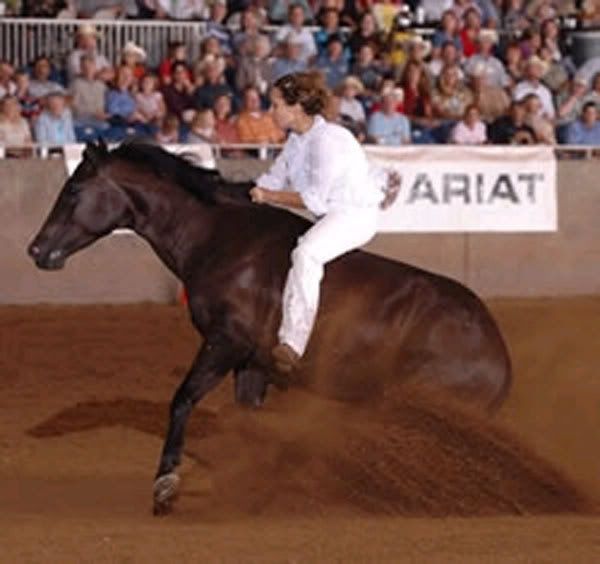Copied from another thread I posted in. This is my way of doing it:
I have three 'seats', I suppose you could say. A neutral seat, a blocking seat, and an open seat.
Neutral Seat - What I use when travelling, and not asking for anything, i.e. we are at my desired speed/impulsion and I just want it maintained. I try to sit quietly, absorb the shock of movement up through my core, and let my legs kind of 'hang' down and around my horse. I only move/change from this seat when I need to ask something, wether it be a lengthen, shorten, stop, turn, etc.
Blocking Seat – This is the seat/action I use when I need to shorten, transition down, make an abrupt turn, or a dead stop. What I am asking for determines the strength of the ‘block’. This one is the hardest to explain… It’s almost like ‘closing’ your pelvis. I kind of ‘contract’ my position… I contract my core muscles, and my thighs contract around my saddle while my heel pulls down to give me security in whatever I’m about to do. I also kind of rotate my pelvis forward which in turn puts more weight in my seat and puts a bit of a ‘hunch’ in my back, not enough that you can see, but enough that I become heavier on the horses back and it also gives me a bit more security in a fast turn or fast stop. So basically my whole body contracts and ‘blocks’ forward movement. However, I only ever do this for one step, except in the case of a back-up. I always pre-empt the block with a half halt so my horse is ready. I use this softly for a shorten, stronger for a downward transition and a back up, and stronger still for an abrupt stop. When I use this for a turn, I use the block to arrest forward motion for a second, and then cue the turn. For a back up, I start at a halt, and move into my blocking seat rhythmically, kind of like you would bump your horse with your legs. To end the back-up, I return to a neutral seat. If a horse doesn’t understand the block, I always start at a walk, and ask for a halt with the seat, and follow up with the rein. Eventually they learn to follow the seat.
Open Seat – What I use when asking for lengthen, upward transitions, etc. It is kind of the opposite of the blocking seat. I ‘open up’ my pelvis, which allows my legs to stretch longer, and straighten my core without becoming rigid, and open up my shoulders. It makes me lighter in the saddle, as well as presenting a lot of forward energy to the horse. I use this lightly for lengthen, a bit stronger for an upward transition, and stringer again for transitions like walk/canter, halt/canter, and then to an extreme when I’m gaming/cow chasing for an abrupt halt/gallop. I also use this to power out of sharp turn such as rollbacks and haunch turns.
And a clearer explanation of the sensation of a 'blocking seat':
I may have a good visual for what wild spot calls a blocking seat. Sit in a chair, quickly suck in your stomach. You'll feel your butt tuck under you. I believe that's what she's taking about. If you ride a lot of half halts using your blocking seat correctly, your stomach muscles should ache when you're finished riding.












